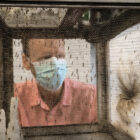Heat Waves Are the Tip Of Connecticut’s Climate Change Iceberg
|
Frank Himmelstein typically works 12 hours a day in the fields of the historic Himmelstein Homestead Farm in Lebanon. Normally, it’s hard work managing fields full of squash, peppers and other vegetables, but July 20 was anything but a normal day. The temperature in Lebanon hit 95 degrees. “It’s not good for people to be working out in this heat,” Himmelstein said on July 21. “Yesterday, well, even I needed to pace myself yesterday.”
The average ‘extremely hot’ day in Connecticut is classified as reaching 90 degrees or above.




